by Mark Evanier and Steve Sherman
- Originally published in Kirby Unleashed by Communicators Unlimited: Newbury Park, CA. 1972
- A corrected and amended version published in Kirby Unleashed by TwoMorrows Publishing: Raleigh, NC. 2004
- Further corrected by the members of the Jack Kirby Discussion Group.
- Many thanks to Mark and Steve!
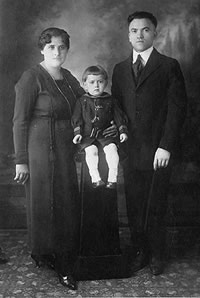
Like many success stories, it all begins with a birth date on the Lower East Side of New York City. The birth date was August 28, 1917, and the Kurtzberg family at 147 Essex Street was one more strong. And the growing up period is not entirely atypical, either: Street-fighting, the usual childhood activities, and the burgeoning instinct of self-preservation were all a part of it. And, too, there was the foreshadowing of what was to come – the doodles cluttering every available scrap of paper, the ‘wasted’ afternoons at the movies… the profound interest in stories. That, more than anything else, occupied young Jack’s time. Schooling was not the best and certainly inadequate in the field of creative writing and art.
Jack Kirby was, then, the student without an official teacher. He learned from anyone who had something to offer, adopting the virtues and making them his own. An early source of art-inspiration, for example, was Alex Raymond’s Flash Gordon newspaper strip. Splendidly illustrated, it has served as the model for a majority of today’s panel-artists. Some of them have adopted its techniques with little reservations and others, like Kirby, now boast very little of the then-important Raymond influence. He learned techniques, not styles, and then went on to make them his own.
The storytelling sense grew, as well, and it was to be important… for it was most likely what led the youthful Kirby into comics instead of into serious illustration. From the start, his drawing style was never intended to emulate reality or to provide any sort of photographic representation. Rather, it was to tell exciting, interesting stories – the Kirby conception of anatomy, for example, defies all manner of real physiology. It does, however, perfectly convey the idea of figures in motion. A semi-realistic caricature – realistic to be identifiable and exaggerated for effect.
Remaining sketchbooks from Kirby’s earlier days are filled with pencil renderings of expertly-formed, carefully-shaded figures and scenes. With such potential, it came as no surprise that Kirby should enroll in the famed Pratt Institute to refine his abilities.
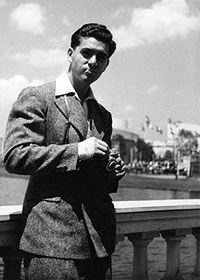
It did, however, come as a surprise when he dropped out the afternoon of his first day at Pratt. Family financial pressures necessitated such and it wasn’t long before Kirby was searching for practical applications of his talents – those which would be both financially rewarding and self-satisfying. Earlier attempts at submitting his work to various markets had yielded an endless series of rejection slips from every market from The New Yorker right on down.
Ultimately, Kirby began his career not in comics but in the other media where drawings are used to tell a story: animated cartoons.
As an ‘in-betweener’ at the Max Fleischer studios, Jack worked on Popeye cartoons. After a few months however, labor unrest erupted at the studio and Kirby decided to get out before he found himself on strike and to seek employment elsewhere.
That employment was found at the Lincoln Newspaper Syndicate, where he began his 3 1/2 year tenure as a political, gag, and strip cartoonist.
While working for Lincoln, Kirby produced a huge volume of work, including ongoing strips, panel gags, and ‘fact’ panels. Lincoln was a small operation with few clients, and some of the strips Kirby created only appeared in a few newspapers while others may not have been published at all. All were penciled, inked and lettered, and most were written by him and the different styles reflect Kirby’s own experimentation at this stage. Whereas The Black Buccaneer strived for a ‘wood-cut’ effect, Abdul Jones was more in keeping with the style of contemporary humor strips. Cyclone Burke was among his first ventures into science-fiction. Socko the Seadog, created by a Lincoln co-worker as an obvious Popeye emulation, proved to be Kirby’s most popular strip of the period.
Even while producing for Lincoln, Kirby worked as part of the large artists’ studio of Will Eisner and Jerry Iger on a number of weekly comic strips. Under the pseudonym of Curt Davis, Kirby did Diary of Dr. Hayward, a science fiction serial. Kirby also drew an adaptation of the Count of Monte Cristo as Jack Curtiss. His first Western, Wilton of the West was produced by Kirby under the name Fred Sande. These strips were published in an oversize comic called Jumbo after Kirby was no longer working for Eisner & Iger.
Finally, Kirby got into the super-hero line when he went to work for Victor Fox, a notoriously low-paying publisher of comic books. Fox’s big star was the Blue Beetle, one of the earliest costumed heroes, and Kirby worked on a short-lived newspaper strip of the character and drew other features for the outfit. Given a small drawing board in the shop, Kirby worked next to another new artist in this new field, Bill Everett, who would later create the Sub-Mariner.
Another Fox staffer at the time was a tall writer-artist who worked as the company’s editor for a time. His name was Joe Simon, and he and Jack struck up a good friendship and working relationship. When Simon went off to other companies, he called on Kirby to be his lead artist. Soon, the two men formed a team which would unleash, for the next decade and a half, a battalion of comic books, stories and characters.
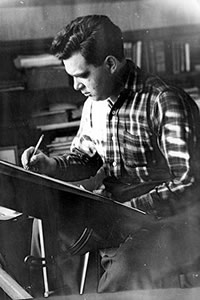
The partnership of Simon and Kirby was hired to work the newly formed Timely Comics Company. The Timely line was, then, distinguished only by its two star-characters: The Human Torch and the Sub-Mariner. More stars were needed then, and Simon & Kirby set about to create likely prospects, such as Hurricane, Tuk the Cave-Boy, Mercury, the Vision, Red Raven, Comet Pierce and, finally, the character whose creation was to bring the team into prominence – Captain America. (Moonlighting for another company, they also produced the first full issue of Captain Marvel Adventures.)
Captain America was an immediate success and it was due to the great demand for his adventures that Simon and Kirby began to produce material at a fast pace… one which would gain even greater momentum later. In a short time, they had produced ten issues of their star-spangled creation and the basic outlines for a companion book to star Cap’s partner, Bucky, as one of the Young Allies. This was to be the end of their creations for Timely, as it became evident that, despite a deal that promised them a share of the profits, they were not sharing in the gold mine that Captain America had become. Convinced they were being swindled, they decided to go elsewhere.
Simon and Kirby’s profit on Cap was, therefore, limited to a good reputation in the business – good enough to earn them a spot at the Detective Comics company, owners of Superman and Batman. Here, they set about creating new strips and in setting up a shop from which to work.
The four strips on which they worked for DC were all popular and ads for the strips sometimes featured the Simon and Kirby by-line more prominently than the strip’s title. Their strips were always filled with action, but not dependent on it. Highlighted by plot twists and humor, they were reflective of the times. Kirby drew upon his own background for settings and characterizations and the audience was very much responsive to it.
The DC editors kept the team busy and their rate of work, very swift at Timely, was now more rapid. They often turned out six pages a day and, when necessary, more than that. This involved doing penciling, lettering and inking – plus scripting; the DC editors were buying scripts from their regular stable of writers for the two, and Simon and Kirby were making gliders out of the scripts and writing their own. More than once, a DC editor would deliver a script to the team and then see its pages drifting out the window as he left.
Sandman and Manhunter, appearing in Adventure Comics, were not created by Simon and Kirby but were, rather, drastically-altered versions of earlier strips. Bearing little or no resemblance to their predecessors, they were both of a super-hero nature and both very well received by the public.
Even more popular, however, were the team’s ‘kid strips’: The Newsboy Legion and The Boy Commandos. The newsboys, aided by the Guardian, a policeman guised as a super-hero, dwelled in Suicide Slum where they encountered bizarre criminals and, as the war effort grew, Nazi spies as well. They were forever getting into trouble and relying on the Guardian to get them out.
The Boy Commandos, led by Rip Carter, were even more popular than the Newsboy Legion and ended up with their own comic, in addition to appearances in Detective Comics and World’s Finest Comics. They battled the Axis more directly than did the Newsboys, as the Commandos fought in Europe while World War II was in progress.
Finally, Simon and Kirby were called away from the drawing board, into service, and their DC strips were abandoned to others.
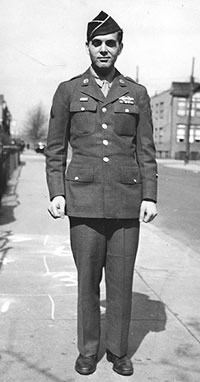
1943 found Kirby stationed overseas in the Fifth Division, Third Army, commanded by General Patton. Serving as a combat Infantryman, he fought in the campaign at Metz and earned two battle stars and a severe case of frozen feet. While in the army hospital, he kept a steady flow of letters back to the States and his new bride, Rosalind. In 1945, he returned to America and re-teamed with Joe Simon to work with the Harvey Comics Company.
After doing Boy Explorers and Stuntman for Harvey, Simon and Kirby turned to Hillman Publications and Crestwood Publications. In addition to the western, mystery and crime comics they packaged, they invented the popular romance genre in Young Romance and Young Love for Crestwood. Black Magic and Fighting American were also met with great popularity, as did their Boys’ Ranch for Harvey. Later, the team decided to form their own publishing company. Mainline Publications put out Foxhole, In Love, Police Trap and Bullseye, but distribution difficulties plagued them and they were forced to sell their line to the established Charlton Comics Group.
During this period, the comic book industry had been undergoing massive upheavals and much of the newsstand space was given over to gore-filled horror comics. Simon and Kirby, in a position of editorial control, released some of their best material at this time, but the industry was not healthy enough to support it. Only slightly before, several publishers had suffered heavy financial losses investing in 3-D comics such as the Captain 3-D book which the team had produced for Harvey.
With public pressure mounting against comics, regardless of content, many fine men were fleeing from the field, and others were finding difficulty securing work.
Simon and Kirby’s staff was generally busy and included, over the years, many of the most-talented craftsmen in the field, some getting their first job from the team.
But, finally, even they had to give in to the reality of an unstable field. As companies failed, Simon and Kirby began to drift apart, and Kirby cast about for work on his own. He not only tried to sell new comic book ideas but made a strong effort to re-enter the newspaper strip field.
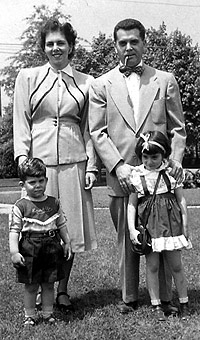
For a time, Kirby assisted his friend and neighbor, Frank Giacoia, on Giacoia’s Civil War strip, Johnny Reb and Billy Yank. But Kirby wanted a strip of his own and prepared samples for many, sometimes in conjunction with various partners. Master Jeremy, which he inked himself, was an all-inclusive war strip. Giacoia helped him out by inking King Masters, a detective strip with a setting in the world of jazz music. Years before, Jack had been asked to succeed the late Alex Raymond on another detective strip, Rip Kirby, but the post went to an artist on the Simon-Kirby staff, John Prentice. Syndicates took an interest in the adventures of a young boy hired by an eccentric scientist. The name of the boy and the strip was Chip Hardy, and it was inked by Will Elder and Marvin Stein. At the last minute, however, the syndicate that had accepted the strip changed its mind.
Kirby’s big success in newspaper strips was the outer space feature, Sky Masters of the Space Force. The strip was signed ‘Kirby and Wood’ and the latter name did triple-duty, as it applied to the inker, Wally Wood, and to the two brothers who handled the scripting, Dick and Dave Wood – no relation to Wally. The manned exploration of space was forecast by the strip, which lasted from 1958 to 1961. (Another Kirby-Wood creation, Surf Hunter, sought to do the same thing for undersea exploration but failed to sell.)
By this time, Kirby had returned briefly to DC. He and Simon had sold them Challengers of the Unknown, then gone their separate ways. Kirby continued it for a time and also drew Green Arrow and House of Mystery for DC, both of which he inked with the help of his wife. He also did some freelance work for the Atlas group, formerly the Timely group.
Soon after, Joe Simon interested the Archie publishers in starting a super-hero line under his editorship. Kirby did his last work with Simon when he helped him on the initial issues of The Fly and The Double Life of Private Strong.
Sky Masters received wide distribution, but its production was beset by legal difficulties, leading Kirby to voluntarily discontinue the strip. Fortunately, though still far from prosperous, the comic book field was slowly on the way back up.
By 1959, Kirby was doing almost all his work for the company previously known as Timely and/or Atlas, soon to be known as the Marvel Comics Group. Their line at the time consisted of love, western and monster comics, and Kirby was put to work on all three. He drew Rawhide Kid and Two-Gun Kid and, as he had before, found the western setting to be an enjoyable one to draw. Most of his time however, was spent on the monster books which featured a rather lackluster format typified by such titles as ‘The Escape of Monsteroso’ and ‘The Creature From Krogarr.’ Produced by a small staff, these books were tiresome but their significance was great, for they eventually led to the creation of the Marvel Super-Heroes.
A slight super-hero revival at other companies was leading to renewed reader interest. With nothing to lose, Marvel decided to try a few super-heroes. The first Fantastic Four, issued in 1961, marked the beginning. The product of Kirby and Marvel’s editor and head writer, Stan Lee, it was a shaky start but one which aroused interest and considerable fan mail.
Editor Stan Lee had developed a new method of producing their books. Instead of beginning with a full script, which the artist would then illustrate, they began with an idea which would be discussed in conference between scripter and penciler and then drawn and paced by the artist as he worked. Dialogue and captions would be added afterwards to fit the pictures. This method allowed greater latitude in the artwork, but necessitated that the penciler not only be a competent artist, but, also a good story-man in his own right. Kirby, of course, was. And, the other members of Marvel’s small art staff at the time, Steve Ditko, Don Heck and Dick Ayers, were, also. Lee described the division of labor once by saying, ‘Some artists, of course, need a more detailed plot than others. Some artists, such as Jack Kirby, need no plot at all. I mean, I’ll just say to Jack, “Let’s let the next villain be Dr. Doom’… or I may not even say that. He may tell me… he just about makes up the plots for these stories. All I do is a little editing.”
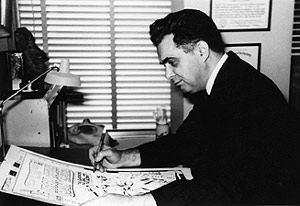
This technique, combining Kirby’s solid storytelling and Lee’s flashy dialogue, inaugurated the Marvel Super-Hero line.
The Incredible Hulk, a super-hero version of Marvel’s old monster stock-in-trade, received his own magazine and Ant-Man, a costumed scientist from an earlier science-fiction story, took over in Tales to Astonish. Neither of these strips, both drawn by Kirby, were as successful as the Fantastic Four. In fact, The Hulk was dropped after a few issues, but kept around long enough after to become one of Marvel’s biggest stars.
The Mighty Thor debuted in Journey Into Mystery and the final issue of Marvel’s Amazing Fantasy introduced Spider-Man, the first of their new heroes not drawn by Kirby. Spider-Man’s beginnings, however, date back to the mid-fifties when Simon and Kirby were devising new characters and trying to sell them to publishers. Along with Night Fighter, Man of Flame and other proposed heroes who never saw print, they had a projected character named Spiderman, who had progressed as far as cover mock-ups but never sold. Recalling the name, Kirby suggested it to Marvel and, working with Stan Lee, started on the first story. For reasons that remain unclear, production was halted in mid-story and Lee started over, devising a different Spider-Man with artist Steve Ditko.
The Human Torch, revived from the forties as a member of the Fantastic Four, took over Strange Tales, and was soon joined by Ditko’s magician character, Dr. Strange. Marvel’s last monster book, Tales of Suspense, introduced Iron Man. Kirby was too busy at the time to pencil the origin story but he did have time to design the character for Don Heck to draw.
Sgt. Fury and His Howling Commandos debuted, combining certain elements of the super-hero line with some of Kirby’s own war experiences. Kirby drew several issues, before Dick Ayers began drawing it.
The Avengers and the X-Men were introduced, and with these, as with the other books, Kirby drew the first issues and established the momentum which other artists would, hopefully, keep going. In the early days of Marvel, Kirby had found it necessary to often pencil and plot five or six books a month. Now, with Marvel’s increased popularity, he could cut down his workload, and concentrate mainly on the Fantastic Four, Thor, occasional layouts for other artists, and a newly-revived version of Captain America. It was in the Fantastic Four that Kirby first drew such popular supporting characters as: Dr. Doom, The Watcher, The Silver Surfer, the Black Panther, Galactus, and the Inhumans.
It was when he cut down on his workload that many noticed a marked improvement in the quality of Kirby’s penciling. In the past, he had often been too rushed to do sufficient backgrounding or to pay very strict attention to detail. His pencils were tighter now, much more ornate and all the more dynamic. Thor, for example, became a true saga of the gods, with its majestic pageantry, finely-detailed costumes, and awesome landscapes. Kirby’s many years of working at a feverish rate had trained him well as one of the comic industry’s fastest and, therefore, most prolific artists.
With their peak of popularity being reached in the mid-sixties, the Marvel characters appeared on television in a series of cartoons and were the subject of many articles on the renewed interest in comics. With more and more staffers being added to Marvel’s crew, Kirby was able to take on a few outside assignments, such as a comic strip adaptation of Jack Ruby’s killing of Lee Harvey Oswald (Esquire magazine) and a poster for the ‘Captain Nice’ TV show.
Marvel was no longer the small, closely-knit operation it had been. With so many new artists and writers added to the crew, plus Marvel’s sale to a large conglomerate, Kirby found it less and less necessary to come into the office, or to even involve himself with the design of new characters and books. He could in fact, even relocate in California from New York, and mail his penciled pages to Marvel from 3,000 miles away.
In 1970, after over a hundred issues of Fantastic Four, Marvel’s readers were rather shocked to hear that he had resigned from Marvel to take up an editorial post and to create a new line of comics for National-DC. Kirby had been with Marvel longer than with any other company, and his contributions there had been substantial. But it was time for a change. Marvel had given him no opportunity in the later years to experiment, and any more characters he would have created would have been pulled away from him. Moreover, the company had been acquired by a conglomerate and its new owners did not seem to even know who Jack Kirby was, let alone what he had contributed to the dynasty they had purchased and what they owed him.
When Carmine Infantino, Editorial Director of National Periodical Publications, offered Kirby a means of escape, he made the inevitable move.

Kirby served as an editor, writer and artist for National-DC comics, where his first assignment was the revamping of the Jimmy Olsen book. This he proceeded to do by introducing the Galaxy Broadcasting System, new owners of The Daily Planet, and its insidious president, Morgan Edge. To this, he added a revived Newsboy Legion and the Guardian and sent them, along with Olsen and Superman, off on a series of adventures wholly unlike any which had filled the Olsen book before.
More important, was the involvement with the ‘Fourth World’ series, which served as the basis for Kirby’s other DC comics, The New Gods, Forever People, and Mr. Miracle. Each shared the common enemy in the person of Darkseid, the master of Apokolips. For, as part of his new mythology, Kirby created the new worlds of Apokolips and New Genesis, home of an infinite number of new heroes and adversaries. It was a sweeping epic, unlike any ever done in comics, but the series was cancelled before it reached its conclusion. Only the Mr. Miracle book continued, albeit without following its Fourth World ties until its final issue.
This was followed by Kamandi, The Demon, OMAC and other new innovations. Jack produced some of his finest war comics work in Our Fighting Forces, drawing on his personal war experiences for the Losers stories. In addition, Kirby launched the first of National’s black-and-white comic magazines, Spirit World and In The Days Of The Mob, and had a one-issue reunion with Joe Simon on Sandman. But despite some creatively rewarding work, when his DC contract came up for renewal, Kirby decided to return to the comic company he was most closely associated with in the past.
Kirby returned to Marvel in 1975, with editorial, script, and artistic control over his old Captain America, a new Black Panther comic, as well as several new creations: Eternals, Machine Man, and Devil Dinosaur, among other projects. Perhaps the highlight of his mid-1970s Marvel period was a Silver Surfer graphic novel, reuniting him one last time with editor Stan Lee.
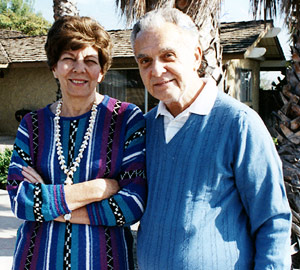
Always searching for a new creative outlet where he could dwarf his past accomplishments, Kirby left Marvel in 1978 to return to his roots in the animation field, creating storyboards and concept art for some of the top animated shows of the time. But comics were his main love, and he helped launch the independent comics movement of the 1980s with work on Captain Victory, Silver Star, and Destroyer Duck, and even got the opportunity to craft a conclusion of sorts to his New Gods series, before finally retiring in 1987.
Jack Kirby passed away on February 6, 1994, leaving behind a legion of fans and ideas, and a creative legacy not likely to ever be matched in the comics field.
As is obvious, it has not been within the scope of this book to encompass all of Kirby’s creations and his many facets. The sampling chosen, however, should be sufficient to demonstrate that Jack Kirby was more than merely a penciler. He was, in fact, a storyteller and innovator, first and foremost. A modern-day Aesop, creating myths and fables for the generations to come. After over fifty years in the field, he never ceased creating, nor did he show any signs of running out of ideas. As he himself put it: ‘The audience is always there and the comic book has yet to reach its full potential.’
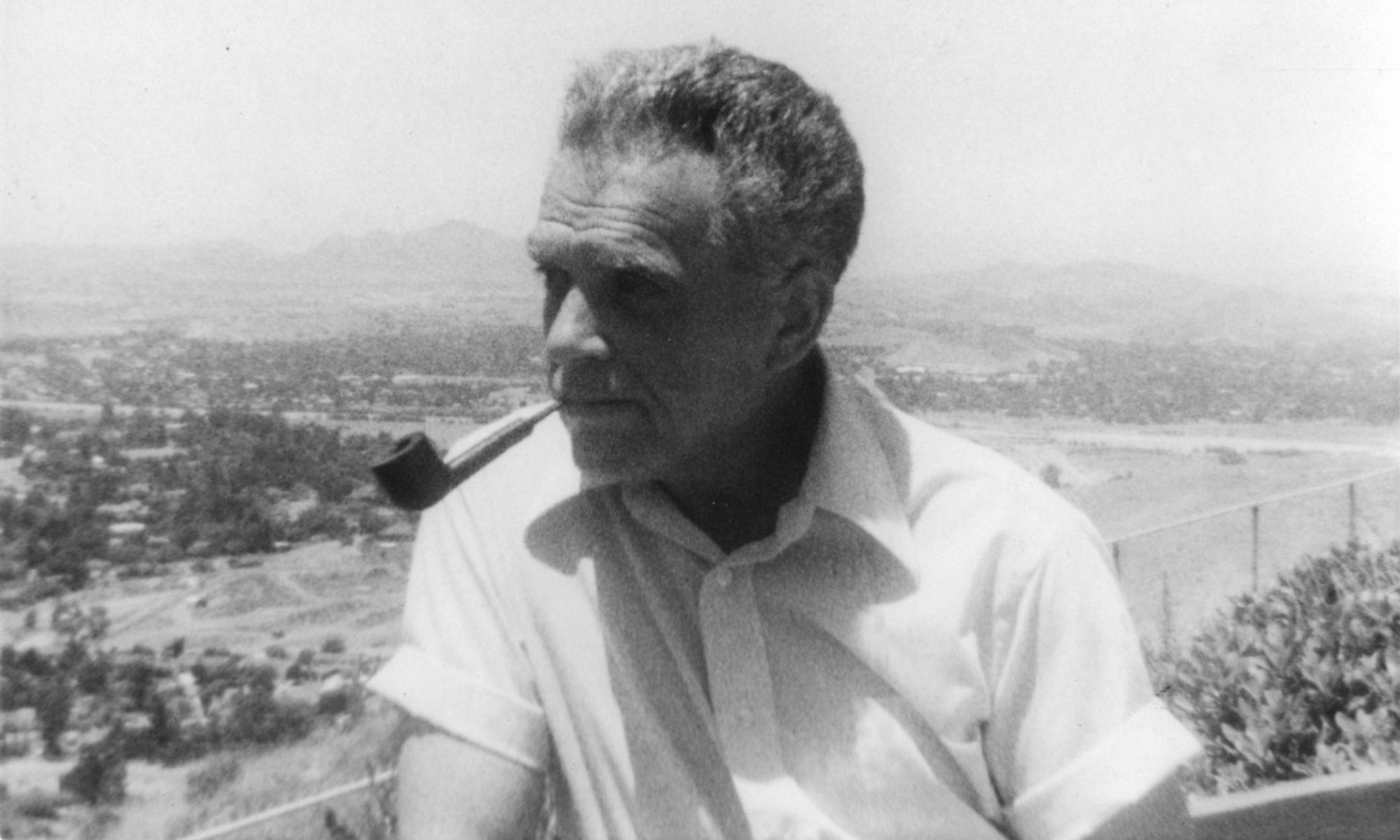
Unfortunately I have absolutely no talent for art, but the joy and the inspiration to dream which was inspired by years of reading comics and Jack Kirby’s Marvel years in particular will forever be appreciated.
I will always believe jack Kirby was the genius behind the designs, concepts, and character creations of early marvel books. Stan lee may have came up with names, ( like Lennon adding yeah, yeah, yeah, to share credit.). Jack Kirby created new characters, reinvented stale ones and developed a whole universe after leaving marvel. Stan lee came up with condor-man. Wow. Ok, maybe merry marvel marching society was his to.
I think the same thing. Stan Lee was caught lying about how he came up with the name of Thor’s hammer. He had nothing to do with it. The name comes from Norse mythology from hundreds of years ago. But Lee took credit for it. If he lied about that, what else did he lie about? Therefore, I tend to believe Jack Kirby over Lee. Some of Kirby’s original artwork has the dialogue written in the borders of Kirby’s pages.
Just amazing all the creativity this man had just simply blows my mind. All Hail The King Of Comics
I’m 61 years old and I have ben a fan of ( jolly JACK KING KIRBY for majority of my life. to me he is to comic book writing and art as BRUCE LEE is to Martial Arts .
Appart from the memories of my mum and dad (both now passed) nothing returns my happy childhood memories like reading my Jack Kirby comics. as beautiful today as then . Thank you Jack , my eldest is named after him, I’m 58 going on 8.
It’s amazing how time flys I’m 59 years young & I was so into comic books in the 60’s, as TV & Movies could’nt achieve the colour & movement that comic books provided, with explosive ideas that fired the imagination, how anyone though they were bad for kids is a wonder as I learned so much from them, new words, grammar, anatomy drawing, I used to copy the characters constantly (often in class). Like a lot of people I did’nt get Jacks’ style straight away, I liked the detail of artists like Neal Adams, Barry Winsor-Smith, Gil Kane, John Romita, etc. When the New Gods arrived, that was for me a quantum shift in storytelling art, that opened up the imagination & took you flying through the multiverses & the thrill is still there. I love comic-book art, which is seen these days as pop art, whatever I’m so happy that the art has been recognized for it’s originality & pure panache. It’s obvious through the immense popularity of Super Hero movies that I was not alone with my love of comics as I sometimes felt, kicking back in my room exploring dimensions & worlds filled with colourful characters of action & adventure. And the “Allfather” of this multiverse, the creator & driving impetus was the uncanny, amazing, sensational….JACK KIRBY.
As a child growing up on LI I was close friends with Jack’s son Neal. We walked to school many days together. It is amazing to think of Neal’s father being such a important talent to the industry , he was so successful in generating so much, so creative ! I always new him as the hardworking guy in the basement room on his drawing board.
I began reading comics in the early 1960’s, probably, 1962. I remember “Tales of Suspense,” “Tales of Mystery,” and “House of Mystery.” I remember Iron Man’s origin issue. Also Submariner, the 1st Fantastic Four, and Ant Man issues. Jack Kirby is the only name on the cover. Stan Lee’s was nowhere. There was no Spiderman yet. Thor was around. I almost always got there after it was sold out. Never saw a copy until later. Then, there was The X-Men, one of the best of the Marvel’s ideas ever. And the villains, Galactus, The Silver Surfer( not really a villain), Dr. Doom, and the military comics, the other western ones; I remember them all, many which the bio mentioned. Again, the only name on the covers was Jack Kirby. He was the genius who made Marvel what it later became, the main DC competitor, not Stan Lee, who came after Jack left.
When I was interviewed at art school in the UK, I was asked who is your favourite draughtsman. I blurted out ‘Kirby! Jack Kirby’ and most of them looked at me with furrowed brows. One of them grinned ear to ear and nodded. ‘He’ll work out just fine,’ he said to his puzzled companions. Since then I’ve never been far from a crow quill. Thanks Jack, you’ll always be there!